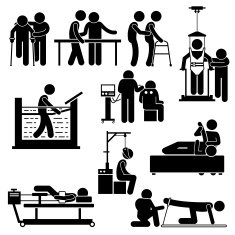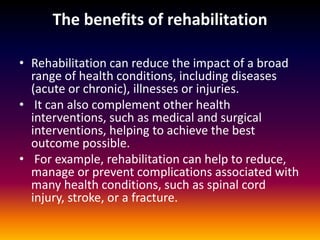Get This Report on Narconon Africa
Get This Report on Narconon Africa
Blog Article
The Best Strategy To Use For Narconon Africa
Table of ContentsThe Ultimate Guide To Narconon AfricaHow Narconon Africa can Save You Time, Stress, and Money.The 5-Second Trick For Narconon AfricaNarconon Africa for BeginnersNarconon Africa for DummiesNot known Incorrect Statements About Narconon Africa The 25-Second Trick For Narconon Africa
In a series of documents with Manudeep Bhuller and Katrine V. Lken, we get rid of these information challenges and the nonrandomness of jail time, supplying new insights into just how incarceration impacts relapse, work, kids, and criminal networks - Residential rehab program. Number 1 Our job studies the impacts of incarceration in Norway, a setting with 2 crucial advantagesWe can additionally connect this information to other member of the family, consisting of kids and brother or sisters. Furthermore, we have details on co-offending that permits us to map out criminal networks for observed criminal activities. Second, we can leverage the arbitrary task of criminal cases to courts that differ in their propensities to send out accuseds to jail.
Some judges send out accuseds to prison at a high rate, while others are extra lax. We measure a judge's stringency as the average imprisonment price for all other cases a judge manages, after controlling for court and year set results, which is the level of random assignment. This quasi-random project of judge stringency can be utilized as an instrument for incarceration, as it highly forecasts the judge's decision in the current situation, but is uncorrelated with various other case attributes both deliberately and empirically.
Some Known Details About Narconon Africa
Features of prisoners, consisting of demographics and criminal offense classifications, are extensively comparable in Norway and various other countries, consisting of the United States, with the exemptions that the US homicide rate is a lot greater, and race plays a larger function there also. What stands out as different, particularly compared with the USA, is the prison system.
Figure 2In Norway, the typical time spent behind bars is a little over six months, which resembles most various other Western European nations. This contrasts with typical US jail time of practically three years, which remains in big part the factor the USA is an outlier in its imprisonment rate compared with the rest of the globe [Number 1]
See This Report about Narconon Africa
This offers much more splitting up between small and hardened offenders than exists in the United States. There is no congestion in Norwegian prisons and far better personal safety, with each detainee being appointed to their very own cell and a greater inmate-to-staff proportion than in the USA (https://www.gaiaonline.com/profiles/narcononza12/46705962/). Prisons in Norway likewise supply well-funded education, medication treatment, mental health and wellness, and work training programs
Our research on the effects of imprisonment on the wrongdoer, making use of the arbitrary project of courts as a tool, returns three vital findings. First, jail time prevents further criminal actions. We find that imprisonment reduces the probability that a person will reoffend within five years by 27 percent factors and minimizes the equivalent number of criminal costs per individual by 10 fees.
What Does Narconon Africa Do?
We locate substantial declines in reoffending likelihoods and advancing billed criminal activities even after accuseds are launched from jail. Our second result is that prejudice due to choice on unobservable individual characteristics, if neglected, additional resources causes the incorrect conclusion that time spent behind bars is criminogenic. If we just contrast criminal defendants sentenced versus those not sent to prison, we discover positive associations between incarceration and subsequent crime.
This stands in comparison to our analysis based upon the random task of courts, which finds an opposite-signed outcome. Third, the decrease in criminal offense is driven by individuals that were not functioning prior to imprisonment. Amongst these individuals, imprisonment boosts involvement in programs routed at boosting employability and lowering recidivism, and this eventually elevates employment and earnings while preventing criminal behavior.

Imprisonment triggers a 34 percentage point increase in involvement in work training programs for the formerly nonemployed, and within five years their work price rises by 40 percent factors. At the exact same time, the chance of reoffending within 5 years is cut by 46 percentage points, and there is a decrease of 22 in the typical number of criminal fees.
The Ultimate Guide To Narconon Africa

A plausible explanation for the distinction is that Norway's jail system varies significantly, both in regards to prison-term size and jail conditions, from the US prison system. While recognizing the effects of imprisonment on the offender is a vital initial step, recording spillover effects is also crucial for examining criminal justice plan and designing reliable prison systems.
The 9-Minute Rule for Narconon Africa

Common least squares estimates reveal that children of incarcerated fathers are 1 percent point a lot more likely to be charged with a criminal offense, relative to a mean of 13 percent, and reveal no result on institution grades. Utilizing our judge stringency instrument, we find no analytical proof that a dad's imprisonment impacts a youngster's own criminal activity or college qualities, but we are unable to rule out modest-sized impacts.
How Narconon Africa can Save You Time, Stress, and Money.
We define criminal groups based on network web links to previous criminal situations. When a criminal network participant is jailed, their peers' chance of being charged with a future criminal offense reduces by 51 percentage factors over the following four years - http://go.bubbl.us/e2b209/7cb4?/New-Mind-Map.
Report this page